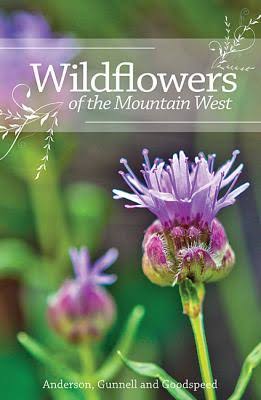The Mountain West is nestled between the Front Range of Colorado and the east slope of California’s Sierra Nevada. It is home to one of earth’s most topographically elevated and biodiverse regions. Wildflowers of the Mountain West is an introductory field guide containing 130 common wildflowers to the region.
According to numerous scholars, the plant species distributed throughout the Mountain West share a common genesis as a result of comparable climate and orogeny. There is substantial evidence that indicates that climatic cycles during the geologic past have caused plants to migrate north to south, east to west, and along altitudinal gradients, as temperature and moisture have changed.
The orogenic events that elevated and shaped the Mountain West did not occur all at once; rather, a series of powerful uplifts and crustal deformations occurred at different periods of geological time in response to the constant exertion of tectonic forces along the western edge of the North American plate. The result, after millions of years, was a system of mountains with extreme physiographic relief and general north-to-south parallelism. These systems of mountains can be categorized into three general provinces – the Rocky Mountains (including the Southern Rockies, the Middle Rockies, and the Wyoming Basin), the Intermontane Plateau (including the Great Basin, the Uinta Basin, the Snake River Plain, and the Colorado Plateau), and the Pacific Mountains (Sierra Nevada).
Nowhere are these parallel ranges more evident than in the heart of the Intermontane Plateaus of Nevada and western Utah, where sagebrush basins give rise to alpine ranges in a rhythmic pattern across the region. These mountain systems collectively make up a portion of the North American Cordillera; one of the largest mountain systems in the world.
To cultivate a stronger understanding of why plants grow where they do, it helps to consider that the fundamental principle governing plant distribution is climate. The term climate denotes a sustained pattern of weather over a long period of time. These sustained climatic patterns, in turn, act according to broad (macro) and local (micro) geographic scales. Both of these scales are ultimately a function of temperature, which in turn is dependent upon the intensity and quality of solar energy (i.e., latitude, elevation, exposure, and season).
The macroclimate of the Mountain West is predominately continental – hot summers, cold winters, and little rainfall. Environmental factors such as land form, large bodies of water, cloud cover, or wind, further modify the predominate weather patterns to create localized microclimates. For example, the maritime microclimate of the Sierra Nevada is a consequence of its proximity to the moderating effects of the Pacific Ocean. The Intermontane Plateau, on the other hand, lies in the rain shadow created by the Sierra Nevada. The result is a drier, semiarid microclimate which extends from Reno to Salt Lake City. The role of elevation, as it relates to temperature regulation, is exemplified in the Rocky Mountains. Air masses moving over the Intermontane Plateau eventually collide with and are forcefully uplifted over the elevated peaks, resulting in adiabatic cooling and release of moisture. Because of this, the Rocky Mountain system enjoys a temperate microclimate that is cooler and wetter in comparison to the arid Intermontane Plateau.
Temperature directly influences the rate of plant growth, including bloom time. While latitudinal warming marks the beginning of each growing season, a particular species at low elevation will begin to bloom earlier than its counterpart at a higher elevation.
Besides climate, plant distribution can be further modified by the accumulating influences of orogeny, fauna, fire, and man. These governing forces are not mutually exclusive but rather interact in a concerted, compounding fashion to randomly (or, in the consideration of human activity, not so randomly) catalyze speciation, influence migratory patterns, impact evolutionary adaptation processes, and, in some instance, cause extinction.
The earliest botanical perspectives considered plant distribution to be a static phenomenon, By the late eighteenth century, however, the advent of standardized botanical names and the acceleration of global exploratory activities precipitated a rapid accumulation of knowledge regarding global climate, soil, topography, and their effect on the distributional patterns of the world’s plant species.
The Mountain West flora consists of individual plant species that have sorted, over time, into stable and distinctive multispecies assemblages along elevational gradients, called communities. These gradients are traditionally referred to as foothill, montane, subalpine, and alpine – in ascending order. One will notice that species of the subalpine (8,000 to 11,000 feet) and alpine (> 11,000 feet) vegetation communities appear to be derivatives of or identical to numerous species in the modern northern flora, as exemplified by the concentration of species in the Mountain West from the genera of Pedicularis, Ranunculus, Saxifraga, and Silene. On the other hand, plant species of the montane (6,000 to 9,000 feet) and foothills (4,000 to 6,000 feet) vegetation communities are represented by genera with a strong southern affinity, such as Allium, Astragalus, Eriogonum, and Penstemon.
